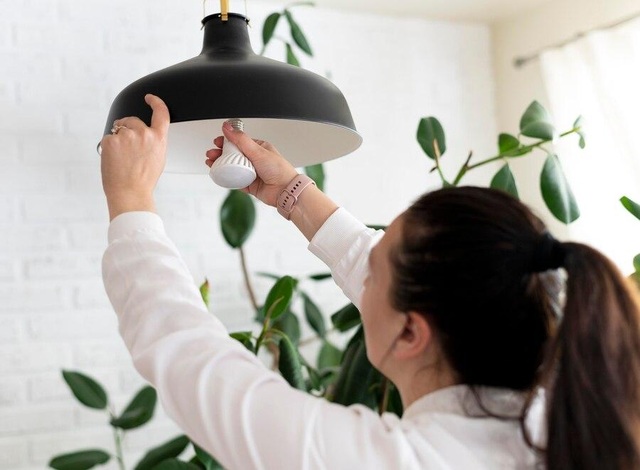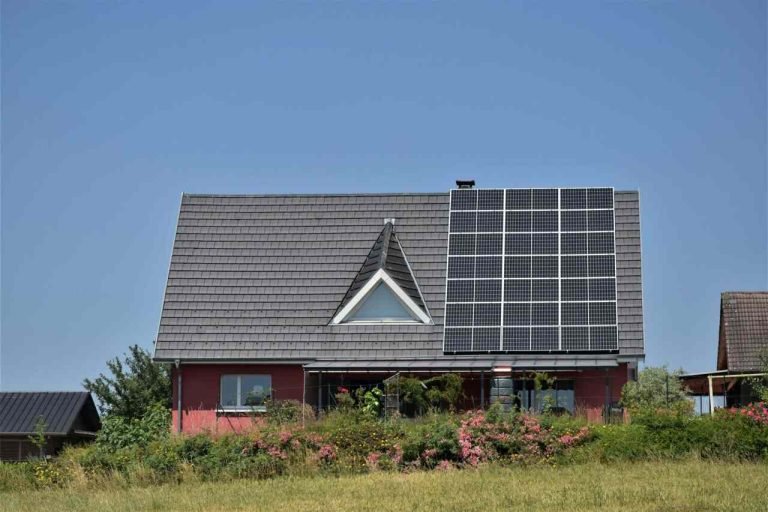In an era where environmental consciousness is becoming a priority, sustainable living has become a vital approach to reducing our ecological footprint.
Sustainable choices in construction, energy, and design contribute to environmental preservation and create cost-effective, resilient, and harmonious living spaces for the future.
This article explores the essential materials and technologies redefining home efficiency, providing a comprehensive guide for those seeking to transition to a more sustainable lifestyle.
Let’s get started.
Integrating PV Panels for Sustainable Living
Integrating PV panels for home use is an innovative way to achieve sustainable living and enhance home efficiency. Reducing reliance on fossil fuels and solar technology helps lower energy costs over time while supporting environmental sustainability.
Efficiency and Technology
Modern PV technology has significantly improved:
- High conversion rates: Over 23% sunlight-to-electricity efficiency; premium models reach up to 24.1%
- Space-saving designs: Higher efficiency reduces the number of panels needed, which is ideal for homes with limited roof space
This makes solar panels perfect for urban areas where optimizing space is essential.
Types of PV Panels
Homeowners generally choose from these three PV panel types:
- Monocrystalline Panels: High efficiency (15-22%), durable, and space-optimized, but more expensive
- Polycrystalline Panels: Balanced efficiency (15-20%) and cost, made from multiple silicon crystals
- Thin-Film Panels: Lightweight, flexible, aesthetically appealing, but with lower efficiency (10-20%)
Environmental Impact
Installing PV panels contributes to:
- Reduced greenhouse gas emissions
- Lower carbon footprints
- Clean and sustainable energy production
As technology evolves, solar integration becomes essential to modern, efficient homes.
Revolutionizing Eco-Friendly Home Design
Lightweight, strong, and durable materials created through aluminum channels play a crucial role in sustainable living by enhancing home efficiency and reducing environmental impact. Its versatility makes it ideal for various residential applications.
Sustainability of Aluminum
- Highly Recyclable: Due to its longevity, about 75% of aluminum ever produced is still in use today
- Energy Efficiency: Producing aluminum from recycled materials uses 92% less energy than creating it from raw materials
- Eco-Friendly Process: Extrusion requires less energy, cutting greenhouse gas emissions
Applications in Home Efficiency
- Windows and Doors: Provide excellent thermal insulation, reducing heating and cooling costs
- Solar Panel Mounting: Secure, lightweight frames make installing renewable energy systems easier and more efficient
- Sunshades and Louvers: Control solar heat gain, improving indoor comfort while lowering air conditioning usage
Durable and Low-maintenance
- Corrosion Resistance: Long-lasting, weather-resistant products reduce the need for replacements
- Customizability: Easily tailored designs optimize resource use and minimize waste
Lightweight, recyclable, and durable aluminum extrusions are a game-changer for building energy-efficient homes that align with sustainable living principles.
| Use Blackout Curtains: Insulate rooms using heavy curtains to retain heat in winter and block it in summer. |
Smarter Appliances for Greener Living
Energy-efficient home appliances are integral to the movement towards sustainable living, particularly in the context of materials and technologies that redefine home efficiency.
These appliances reduce energy consumption and help mitigate environmental impacts, making them essential for modern households aiming for sustainability.
The table below highlights technologies in energy-efficient appliances and their impact on sustainability:
| Technology | Benefits | Efficiency Impact |
| Inverter Technology | – Adjusts power consumption based on needs
– Provides consistent temperature control – Reduces energy waste |
Increases energy efficiency by optimizing power usage in air conditioners and refrigerators |
| Smart Sensors | – Monitors usage patterns
– Optimizes energy use – Enhances user convenience |
It improves efficiency by automatically adjusting settings based on real-time data, leading to reduced energy consumption |
| Induction Cooking | – Heats pots directly for faster cooking
– Less heat loss compared to traditional methods – Safer to use (more excellent surfaces) |
Significantly increases cooking efficiency by minimizing wasted heat and reducing cooking time |
Save Water, Save the Planet
Water conservation is vital for sustainable living, enhancing home efficiency, and protecting environmental health. With growing global water demands and climate change worsening scarcity, adopting innovative water practices has never been more vital.
Effective Water Conservation Techniques
- Smart Irrigation Systems: Use sensors to monitor soil moisture and weather, optimizing water schedules for minimal waste and healthy plants.
- Drip Irrigation: Deliver water directly to plant roots, reducing evaporation and runoff—ideal for gardens and agricultural spaces.
- Rainwater Harvesting: Collect rainwater from roofs and reuse it for irrigation, laundry, or flushing toilets, cutting dependence on municipal water.
- Water Recycling: Treat and repurpose greywater (from sinks, showers, and laundry) for non-potable uses like irrigation and toilet flushing.
- Low-Flow Fixtures: Upgrade faucets, showerheads, and toilets to conserve water while maintaining strong performance.
- Drought-Tolerant Landscaping: Use native plants and xeriscaping to minimize outdoor water usage and maximize efficiency.
Impact of Water Conservation
- Lower Utility Bills: Reduce household water expenditure through efficient systems and fixtures.
- Environmental Benefits: Conserve freshwater resources, reduce energy used for treatment and distribution, and lower greenhouse gas emissions.
- Ecosystem Protection: Sustain natural habitats like rivers and wetlands by minimizing water exploitation.
Adopting these strategies saves water and money and supports broader efforts to preserve natural ecosystems and combat climate change. Sustainable water use contributes to a healthier planet for future generations.
| Build a Rain Garden: Create a landscaped area that captures and filters rainwater to support sustainable drainage. |
Merging Beauty and Sustainability

Eco-conscious interior design combines aesthetics and sustainability to create beautiful, eco-friendly living spaces. This approach emphasizes renewable materials, efficient technologies, and healthier environments.
Principles of Eco-Conscious Interior Design
- Sustainable Materials: Utilize bamboo, reclaimed wood, and recycled glass for unique, biodegradable, and non-toxic interiors.
- Energy Efficiency: Maximize natural light, LED lighting, energy-efficient windows, and smart home technologies to lower utility bills and carbon footprints.
- Water Conservation: Use water-saving fixtures and low-irrigation landscapes to conserve resources and cut costs.
- Indoor Environmental Quality: Improve air quality with non-toxic materials, ventilation, plants, and biophilic elements like living walls or green roofs.
Benefits of Eco-Conscious Interior Design
- Healthier Living Spaces: Reduce exposure to toxins, ensure good air quality, and foster well-being.
- Higher Property Value: Sustainable homes attract buyers and offer better resale potential.
- Timeless Appeal: Durable materials and classic designs resist trends, minimizing the need for frequent updates.
The eco-conscious interior design redefines home efficiency while respecting the planet. By prioritizing sustainable materials, energy savings, and healthier environments, this philosophy enhances quality of life and paves the way for a greener future.
A Sustainable Future Starts at Home
Embracing sustainable living is more than a lifestyle choice; it’s a commitment to preserving the planet while creating efficient, healthy, and beautiful spaces.
By incorporating these strategies, we can lower costs, reduce our ecological footprint, and shape a future where sustainability and modern living coexist harmoniously.
The journey begins at home—take the first step toward a brighter, greener tomorrow!

